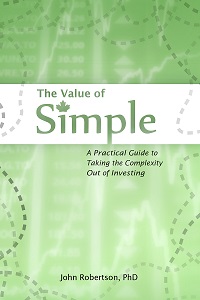Well, I’m back from the trip out east. I didn’t take a single photo while out there, not even of the rental car I’m about to talk about. I fail at vacation.
While there I rented a Ford Fusion (a free upsize from the “cobalt or similar” I had reserved since it was the only car they had left). It cost me $350 for the week, which was pretty good — I had to wait a month for the price to come down to that level, the first few quotes I was getting were over $800! Oh, and if you are going to fly into Charlottetown in the peak of tourist season and will need a rental car, be sure to reserve one in advance. There was more than one person hoping to just pick a car up, and between the four rental counters there were only two cars available (I heard them all yelling about it :).
The Fusion was a nice ride, I must say the things I’ve heard about Ford improving (especially with the new Fusion) seem to be true: the car was fun to drive, quite responsive, and everything seemed to fit together well, no rattles or even much engine noise. The seats seemed to hug and support us quite well. I’m sure it’s a standard feature on most cars now, but there was a USB port inside the centre armrest to plug in an iPod so we didn’t have to listen to the radio.
However, the visibility was ass. The rear end seemed to be sprung up in the air a bit, which combined with the spoiler and large C-pillars made backing up really hazardous. The rear-view mirror was also oddly low on the windshield, so even with my seat lowered as far as it would go, I just couldn’t seem to see under it to look out to anything right of centre. In fact, the car was oddly proportioned: I’m only 5’8″ tall, and when I first got in, my head hit the ceiling. Even after lowering the seat I only had about 3″ of headroom, and felt like I was too high up relative to the rear-view mirror… I don’t know how anyone over 6′ would ever be able to get in it. Despite that, the dash and “beltline” (bottom of the windows) were very high, making the car seem somewhat claustrophobic (and it also made the steering wheel feel too high, like I had to reach up for it rather than straight out; my arms couldn’t quite get into a natural position to hold it). Wayfare also complained that the passenger seat wouldn’t recline very far, making it hard for her to nap. The experience was valuable though, since it helped give me an idea of the sorts of things that can start to drive me crazy after a week of living with them, so I’ll have a more watchful eye when it comes time to start test-driving replacements for the Accord (the number one choice needing no mention here, of course).
Some of those issues are just subjective things, but it was the numbers I was perhaps most disappointed in: the fuel consumption. Pretty much the only driving we did was between the cottage and Charlottetown, a ~20 km drive on rural highways with speed limits of 80 or 90 km/h. There are only 3-5 stops along the way (depending on your luck with red lights). This is about as close as you can get to mimicking the government test cycle, so the car should have achieved (or even beat, with luck, since driving conditions don’t get better than PEI!) its highway rating:
Flex fuel SEL AWD flex-fuel: 7.8L/ 100 km HWY. (The I4 FWD is rated at 6.4L/ 100 km HWY.)
So we should have been getting roughly 8 L/100 km on the trip, but instead averaged over 10 L/100 km. I know my Accord would have got at least (most?) 7 L/100 km in that kind of driving, and I can’t figure out why the Fusion did so poorly. Yes, it’s got AWD and a flex fuel engine which is going to hamper it relative to the Accord, but that’s factored into the rating above: why the 25% miss? It’s possible that Ford gets a “credit” towards its fuel consumption rating for having the ability to burn ethanol/E85, but I doubt it — that sort of stuff can get figured in for things like overall fleet consumption goalposts, but I don’t think it actually affects the sticker rating above. Beyond that though I’m at a bit of a loss: perhaps the rental agency filled the tank with ethanol… but I can’t find any mention of stations in the Charlottetown area that sell E85. Maybe the rental wasn’t in very good condition, despite only having 6000 km on the odometer? Maybe the tires were soft, or the engine hadn’t finished breaking in… Whatever the reason, I was not pleased by the mileage. Perhaps Ford should sell their “ecoboost” engines to the rental agencies over the flex fuel options…
Whatever it was I just wasn’t satisfied with the car in the end, and was actually happy to leave behind the brand new, sparkling clean car to get back into my 13-year-old Accord.
(Though I do miss the instantly-cold air conditioning).
as well.


 Questrade: use QPass 356624159378948
Questrade: use QPass 356624159378948 Passiv is a tool that can connect to your Questrade account and make it easier to track and rebalance your portfolio, including the ability to make one-click trades.
Passiv is a tool that can connect to your Questrade account and make it easier to track and rebalance your portfolio, including the ability to make one-click trades.